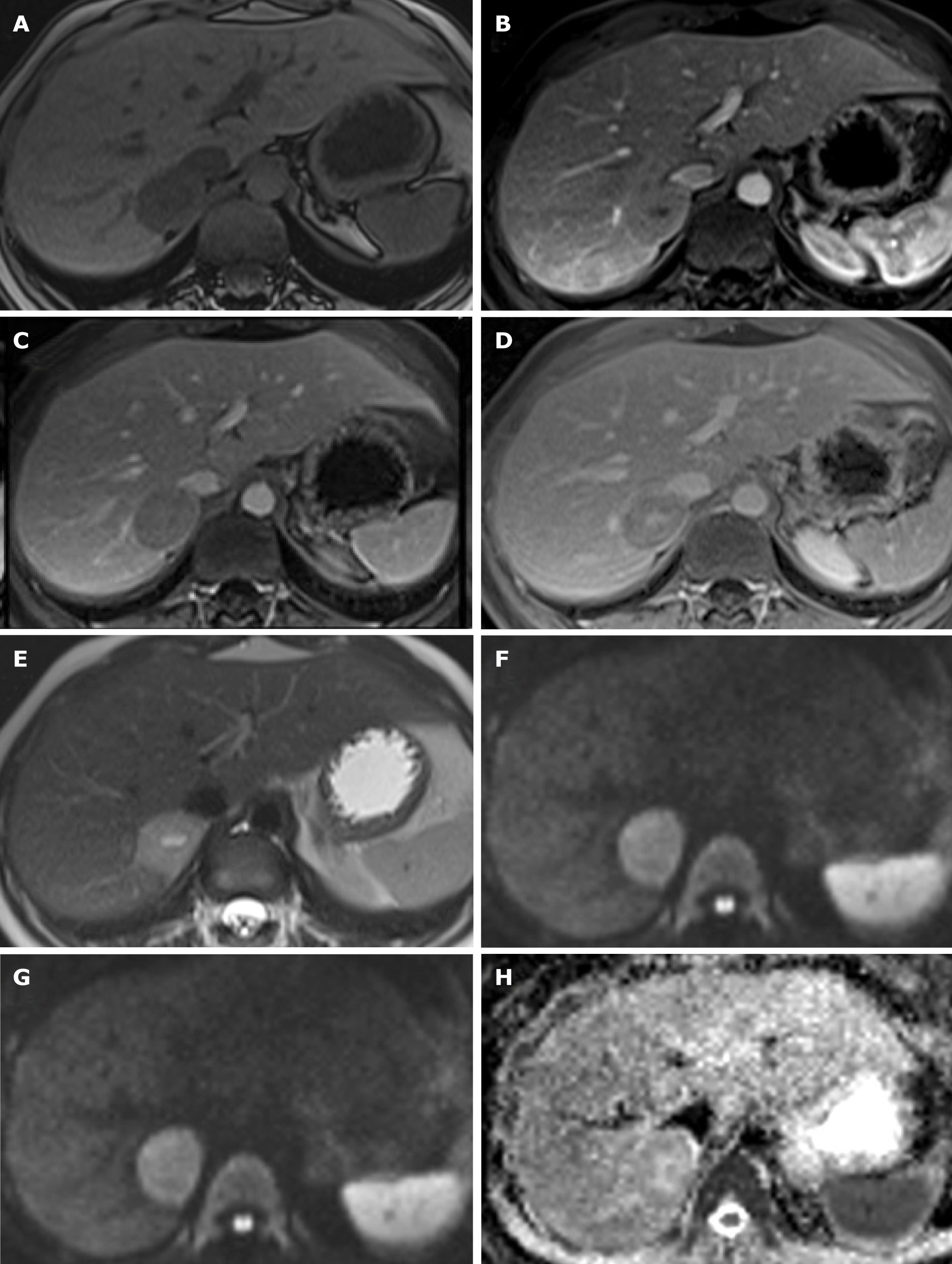Copyright
©The Author(s) 2019.
World J Gastrointestinal Surgery. Apr 27, 2019; 11(4): 229-236
Published online Apr 27, 2019. doi: 10.4240/wjgs.v11.i4.229
Published online Apr 27, 2019. doi: 10.4240/wjgs.v11.i4.229
Figure 1 Magnetic resonance imaging is showing a focal image with well-defined limits in segment VII of the liver, in contact with the inferior vena cava.
A: It is slightly hypertensive in T2 with a central zone of a higher signal; B: Is hyperintense in diffusion-weighted image b800; C: Is iso-hyperintense in ADC; D: It is iso-hypointense in phase sequence; E: Has a signal drop in the out-of-phase sequence; F: After administration of the EV contrast, it does not enhance in the arterial phase; G: Is hypointense in the portal phase; H: Shows an apparent central scar in the late phase. These findings are compatible with hepatocellular adenoma or Focal Nodular Hyperplasia of atypical behavior.
- Citation: Glinka J, Clariá RS, Fratanoni E, Spina J, Mullen E, Ardiles V, Mazza O, Pekolj J, de Santibañes M, de Santibañes E. Malignant transformation of hepatocellular adenoma in a young female patient after ovulation induction fertility treatment: A case report. World J Gastrointestinal Surgery 2019; 11(4): 229-236
- URL: https://www.wjgnet.com/1948-9366/full/v11/i4/229.htm
- DOI: https://dx.doi.org/10.4240/wjgs.v11.i4.229









